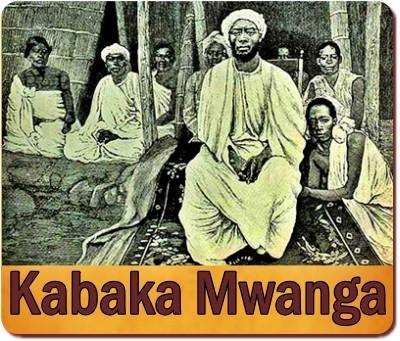By Spy Uganda
Kampala: The Uganda Martyrs are a group of 23 Anglican and 22 Catholic converts to Christianity in the historical kingdom of Buganda, now part of Uganda, who were executed between 31 January 1885 and 27 January 1887.
They were killed on orders of Mwanga II, the Kabaka (King) of Buganda. The deaths took place at a time when there was a three-way religious struggle for political influence at the Buganda royal court. The episode also occurred against the backdrop of the “Scramble for Africa” – the invasion, occupation, division, colonization and annexation of African territory by European powers. A few years after, the English Church Missionary Society used the deaths to enlist wider public support for the British acquisition of Uganda for the Empire. The Catholic Church beautified the 22 Catholic martyrs of its faith in 1920 and canonized them in 1964.
Kabaka Mwanga II succeeded to the throne in 1884. He was concerned at the growing influence of Christianity and the rise of a new class of officials, distinct from the traditional territorial chiefs who were educated, had a religious orientation and wished to reform the Ganda society.
READ ALSO: Clergy, Christians Hold ‘Scientific’ Namugongo Martyrs’ Day Celebrations Due To COVID-19
Executions In 1885–86
In 1886 Mwanga ordered the executions of a number of his pages. Joseph Mukasa, a convert to Christianity who had deplored the assassination of Hannington, and had tried to protect the court pages was the first to be executed on 15 November 1885: this was at the instigation of the Katikkiro (prime minister) Mukasa whose successor Joseph Mukasa was tipped to become king.
Then, between 25 May and 3 June 1886, a wider series of executions were carried out. Mwanga instructed the killing of all the young men who disobeyed him partly to satisfy the demands of the older chiefs. Twenty-two of the men who had converted to Catholicism were burned alive at Namugongo in 1886.
A witness to the event, the French missionary priest Lourdel, considered that the principal cause was Mwanga’s feeling of being despised by the literate Christians who claimed superior knowledge of religion. Lourdel gave as a secondary cause of Mwanga’s action the refusal of the pages to meet traditional royal demands of submission.
READ ALSO: COVID-19: Police Issues Strict Guidelines Ahead Of Scientific Uganda Martyrs Celebrations
Political Aftermath
In September 1888, Mwanga planned to get rid of remaining Christian and Muslim leaders by leaving them to starve on an island in crocodile-infested Lake Victoria. Word of his plan leaked out and a rebellion by Christians and Muslims together brought Mwanga’s brother Kiweewa to the throne. In October 1888, the Muslims seized power, expelled the Christian leaders and, when Kiweewa refused to be circumcised, deposed and killed him, replacing him with another brother, Kalema.
In December 1888, Mwanga won support from Christians and in April 1889 advanced against the Buganda capital. He was defeated, but the Christian forces, led by the Protestant chief Apollo Kaggwa, retook the capital, enabling Mwanga to enter it triumphantly on 11 October 1889. The Muslims took refuge in the neighbouring kingdom of Bunyoro, which helped them to return victoriously in November 1889, but they suffered a decisive defeat in February 1890 and withdrew again to Bunyoro.
Catholic Church Veneration
Following the deaths, the Roman Catholic Church used the episode to make the victims the focus of a “cult of martyrs”.
READ ALSO: ‘Only 100 People Will Attend Namugongo Martyrs Day Celebrations Due To COVID-19 Pandemic’-Baine
Pope Benedict XV beautified Charles Lwanga, Matiya Mulumba, and their twenty companions on 6 June 1920, and Pope Paul VI canonized them on 18 October 1964.
In the ceremony of canonization of the Catholic martyrs, Pope Paul mentioned also the Anglicans, saying: “Nor, indeed, do we wish to forget the others who belong to the Anglican confession, confronting death in the name of Christ.
“A 3 June feast day of Charles Lwanga and the twelve others who died on 3 June 1886 is included in the General Roman Calendar, while the nine remaining martyrs are commemorated in the Roman Martyrology on their respective dates of death. A set of postage stamps were issued in the following year by Vatican City for commemorating the canonization.
The Basilica of the Uganda Martyrs at Namugongo was built in 1968. Since the 1980s it has become the venue of massive pilgrimages, and plans for large-scale expansion were announced in 2014.
READ ALSO: Rwanda Army Blocks Pilgrims FromTraveling To Uganda For Martyrs Day
In 1993, the Uganda Episcopal Conference established a university named after the Uganda Martyrs, which received its civil charter in 2005.
Finally, Here Are The Catholic Martyrs Being Celebrated Today
- Achilleus Kiwanuka (d. 3 June 1886)
- Adolphus Ludigo-Mukasa (d. 3 June 1886)
- Ambrosius Kibuuka (d. 3 June 1886)
- Anatoli Kiriggwajjo (d. 3 June 1886)
- Andrew Kaggwa (d. 26 May 1886)
- Antanansio Bazzekuketta (d. 27 May 1886)
- Bruno Sserunkuuma (d. 3 June 1886)
- Charles Lwanga (d. 3 June 1886)
- Denis Ssebuggwawo Wasswa (d. 25 May 1886)
- Gonzaga Gonza (d. 27 May 1886)
- Gyavira Musoke (d. 3 June 1886)
- James Buuzaabalyaawo (d. 3 June 1886)
- John Maria Muzeeyi (d. 27 January 1887)
- Joseph Mukasa (d. 15 November 1885)
- Kizito (d. 3 June 1886)
- Lukka Baanabakintu (d. 3 June 1886)
- Matiya Mulumba (d. 30 May 1886)
- Mbaga Tuzinde (d. 3 June 1886)
- Mugagga Lubowa (d. 3 June 1886)
- Mukasa Kiriwawanvu (d. 3 June 1886)
- Nowa Mawaggali (d. 31 May 1886)
- Ponsiano Ngondwe (d. 26 May 1886)





